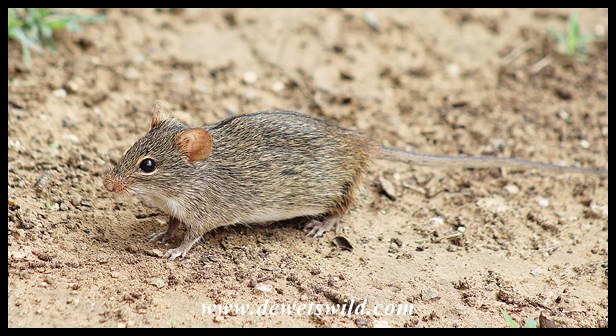Lemniscomys rosalia
A commonly encountered rodent thanks to its diurnal nature, the Single-striped Grass Mouse is found in a wide range of habitats, from dry scrub to savanna and even the edge of cultivated farmlands wherever good grass cover is available. Grass and seeds make up the bulk of its diet, with other green plant material and a wide range of invertebrates making up the remainder.
Single-striped Grass Mice dig their own burrows at the base of grass tussocks or bushes, from which a network of paths radiate under dense vegetation leading to their favourite foraging grounds. Home burrows may be inhabited by solitary individuals, pairs or family groups. Females give birth to litters of 2-11 babies (usually 4 or 5) during spring and summer after a 4 week gestation. The young are weaned within 3 weeks of birth. In the wild they seldom live longer than a year. Adults grow to a total length of up to 30cm, of which the tail makes up roughly half, and weigh around 60g.
The Single-striped Grass Mouse is considered of least concern and has two centres of distribution: a north-eastern in Kenya and Tanzania, and a southern from Zambia and Malawi to South Africa’s northern provinces (Limpopo, North West, Gauteng, Mpumalanga and Kwazulu-Natal).







